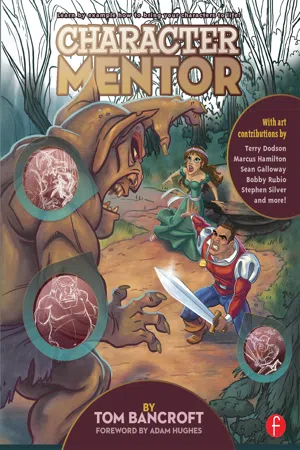
Character Mentor
Learn by Example to Use Expressions, Poses, and Staging to Bring Your Characters to Life
- 164 pages
- English
- ePUB (mobile friendly)
- Available on iOS & Android
Character Mentor
Learn by Example to Use Expressions, Poses, and Staging to Bring Your Characters to Life
About this book
You've researched your character extensively, tailored her to your audience, sketched hundreds of versions, and now you lean back content as you gaze at your final character model sheet. But now what? Whether you want to use her in an animated film, television show, video game, web comic, or children's book, you're going to have to make her perform. How a character looks and is costumed starts to tell her story, but her body language reveals even more. Character Mentor shows you how to pose your character, create emotion through facial expressions, and stage your character to create drama. Author Tom Bancroft addresses each topic with clear, concise prose, and then shows you what he really means through commenting on and redrawing artwork from a variety of student "apprentices." His assignments allow you to join in and bring your drawing to the next level with concrete techniques, as well as more theoretical analysis. Character Mentor is an apprenticeship in a book.
Professional artists from a variety of media offer their experience through additional commentary. These include Marcus Hamilton (Dennis the Menace), Terry Dodson (X-Men), Bobby Rubio (Pixar), Sean "Cheeks" Galloway (Spiderman animated), and more. With a foreword by comicbook artist Adam Hughes, who has produced work for DC, Marvel Comics, Lucasfilm, Warner Bros. Pictures, and other companies.
Frequently asked questions
- Essential is ideal for learners and professionals who enjoy exploring a wide range of subjects. Access the Essential Library with 800,000+ trusted titles and best-sellers across business, personal growth, and the humanities. Includes unlimited reading time and Standard Read Aloud voice.
- Complete: Perfect for advanced learners and researchers needing full, unrestricted access. Unlock 1.4M+ books across hundreds of subjects, including academic and specialized titles. The Complete Plan also includes advanced features like Premium Read Aloud and Research Assistant.
Please note we cannot support devices running on iOS 13 and Android 7 or earlier. Learn more about using the app.
Information
CHAPTER 1
NOW WHAT?
Drawing Basics for
Posing and Expressions
NOW WHAT? 1
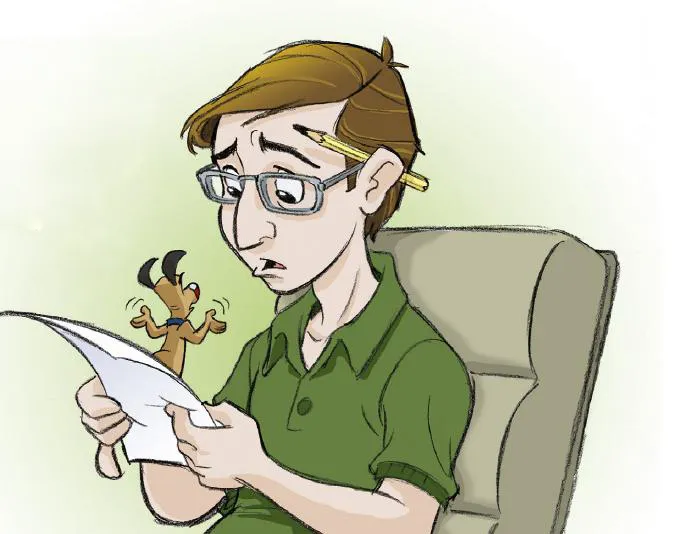
TWINNING

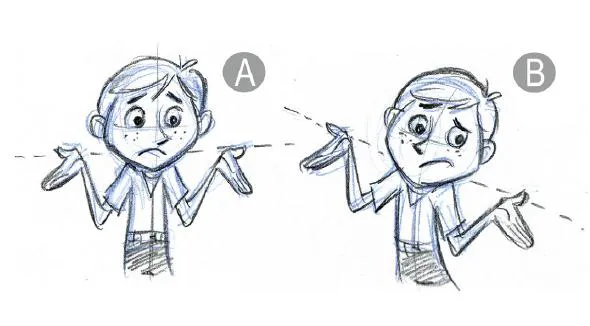
USING PERSPECTIVE TO CREATE DEPTH
- Help you avoid twinning in your character’s stance. Even if your character has some symmetry to its pose, adding depth to its stance will automatically take away the twinning problem because of the differences in the sizes of the shapes. In Figure B, the foreground eye, ear, arm, and leg are bigger than the left side of the drawing which helps the drawing appear less symmetrical.

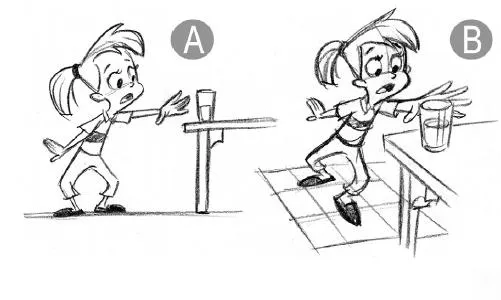
- Make your poses more dynamic. Note that the more dynamic angle in Figure B immediately gives more drama to the scene of the little girl reaching for the glass.
- Make poses more clear and give them a better silhouette. A good way to check your character’s silhouette value is to shade it in on the back of your paper. Figure A, if shaded in would be very unclear what the boy was pointing at- or even that he was pointing at all! The pose in Figure B, clears that guesswork up!
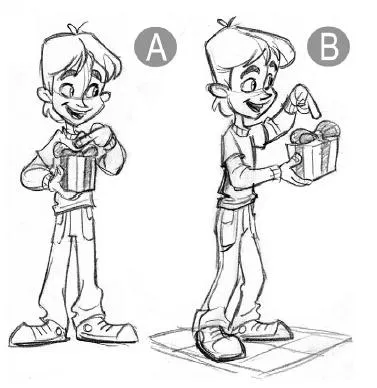
- Help strengthen expressions and emotions. The slump in the shoulders and the head hanging down can be seen clearer in the quarter-front view on the right than the dead-on front view on the left.
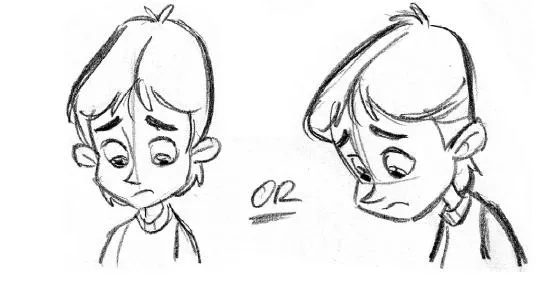
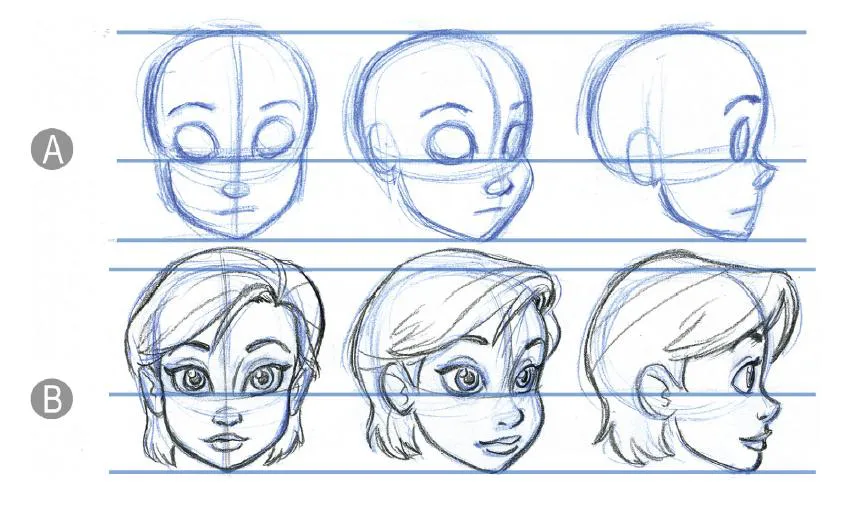
CLOTHING: DEPTH KILLERS?
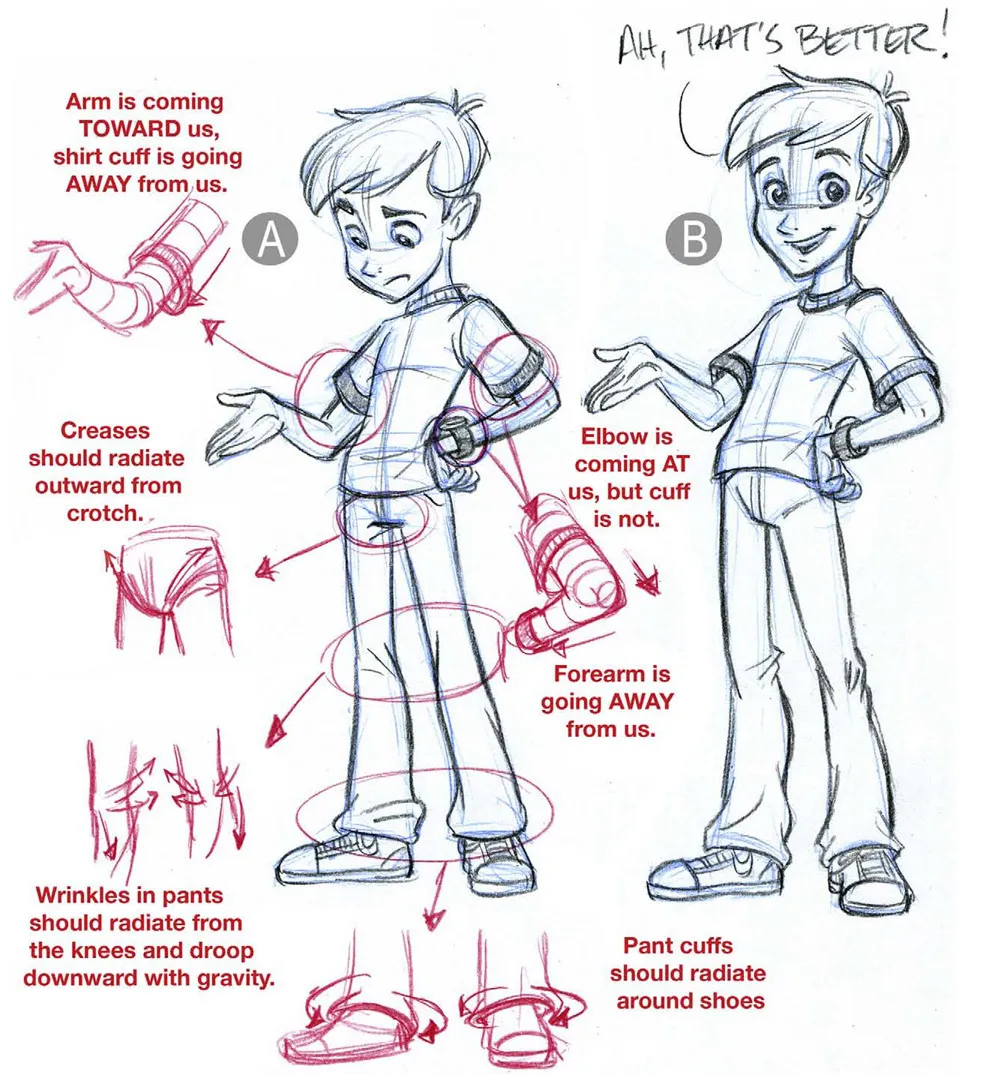
USING THE CORE

LINE OF ACTION

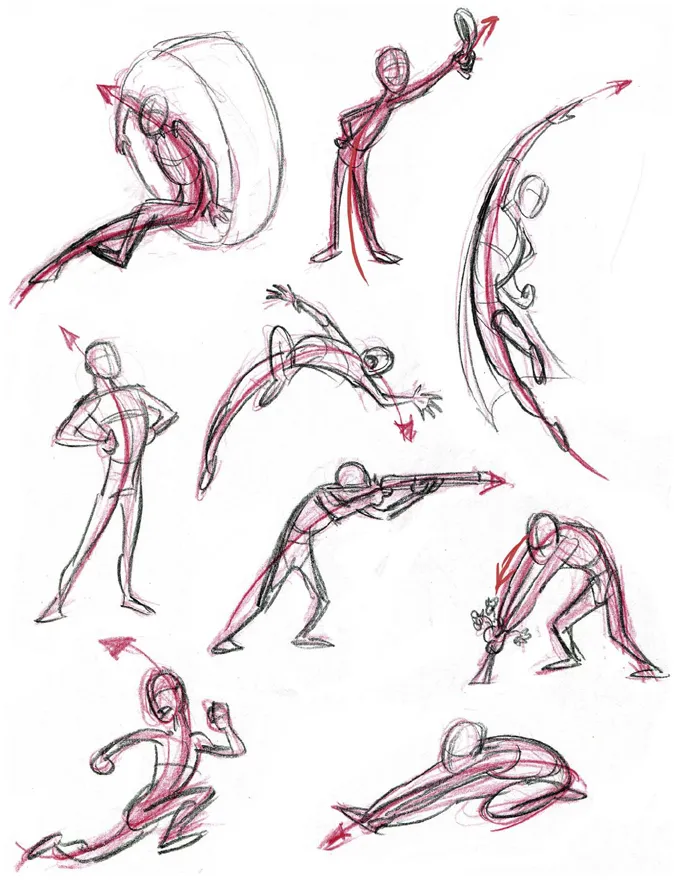
DRAMA IS NOT VERTICAL
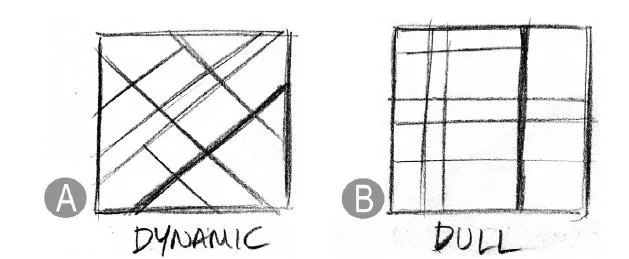
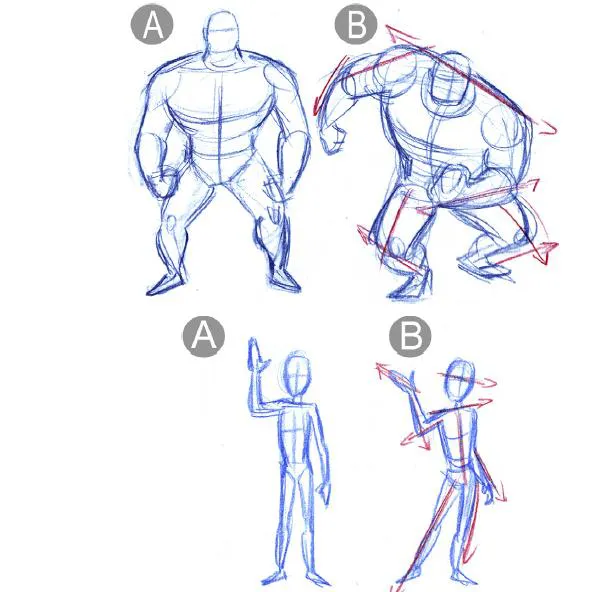

STEP-BY- STEP:CREATING A POSE FROM START TO FINISHED COLOR
Table of contents
- Cover
- Half Title
- Full Title
- Copyright
- Contents
- INTRODUCTION
- FOREWORD
- ACKNOWLEDGMENTS
- CHAPTER 1 NOW WHAT?: DRAWING BASICS FOR POSING AND EXPRESSIONS
- CHAPTER 2: THE FACE: BREAKING DOWN THE ELEMENTS OF EXPRESSION
- CHAPTER 3: POSING YOUR CHARACTER: WHAT ARE YOU TRYING TO COMMUNICATE?
- CHAPTER 4: ACTING: CHARACTERS ACTING AND REACTING THE WAY YOU WANT THEM TO
- CHAPTER 5: STAGING YOUR SCENE: USING THE ELEMENTS OF YOUR SCENE TO CREATE A COMPOSITION
- CHAPTER 6: LEADING THE EYE: PRIORITIZING BY DESIGN
- CHAPTER 7: PUTTING IT IN ACTION: CREATING A CHARACTERDRIVEN ILLUSTRATION FROM START TO FINISH
- Index